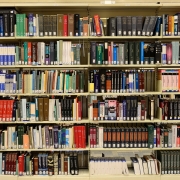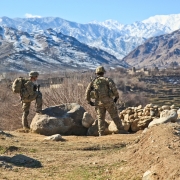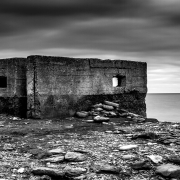Golden Age of Capitalism: Revisited
Topic of Study [For H2 History Students]:
Paper 1: Understanding the Global Economy (1945-2000)
Section B: Essay Writing
Theme II Chapter 1: Reasons for growth of the global economy
A remarkable phase for the world economy: The Golden Age
Initially, the economic conditions were dire. Critical infrastructure, such as factories, schools and hospitals, were destroyed by bombing campaigns. People starved as food was scarce. Unemployment rates were high, giving rise to strikes in parts of Europe. Governments were in need of monetary assistance to begin their post-war recovery efforts.
Against the Cold War backdrop, the USA stepped up and offered financial aid (e.g. Marshall Plan) to countries affected by WWII. While its financial support to countries was mainly for economic recovery, the USA also capitalised on its economic might to counter the encroaching influence of the Communists led by the Soviet Union.
Between 1945 and 1973, the global economy grew rapidly. Many countries achieved pre-war industrial levels by the 1950s. In addition, the advent of international trade accelerated growth of the world economy.
Between 1950 and 1975 income per person in the developing countries increased on average by 3 per cent p.a., accelerating from 2 per cent in the 1950s to 3.4 per cent in the 1960s. This rate of growth was historically unprecedented for these countries and in excess of that achieved by the developed countries in their period of industrialization.
An excerpt taken from “The Golden Age of Capitalism: Reinterpreting the Postwar Experience” by Stephen A. Marglin and Juliet B. Schor.
Keep moving: The rise of automobiles
During the ‘Golden Age’, many American households reaped the benefits of post-war economic advancements. It became a norm for each household to own an automobile. Interestingly, Elvis Presley purchased a pink Cadillac in 1955. The Cadillac represented pinnacle of American automobile production.
The 1950s are seen by many as the “golden age” of the automobile in America, with absolute and per capita car sales hitting new heights, styling on a rampage, and the auto becoming a part of every aspect of American life, with drive-in restaurants, movies, churches, and funeral parlors.
[…] The post-World War II period also marks the beginning of a series of studies that attempt to analyze the hierarchical organization and managerial techniques that have been and are being applied in the automotive industry.
An excerpt taken from “The Automobile in American History and Culture: A Reference Guide (American Popular Culture)” by Michael L Berger.
The OECD: Club of the Rich?
On 30 September 1961, the Organisation for Economic Co-operation and Development (OECD) was formed with the aim to promote economic progress and world trade. OECD members were considered advanced economies that occupied most of the world’s Gross Domestic Product (GDP).
However, the growth of the global economy was not entirely smooth sailing. As the post-war allies of the USA recovered, notably West Germany and Japan, the open markets had intensified trade competition. These growing economies then challenged the economic supremacy of the USA in the 1960s.
One of several ironies in these developments was that they were led by Germany and Japan, former enemies of the US and its allies, who are now major challengers to US economic power and serious competitors in world trade. By 1960, Germany and Japan together accounted for only 6.3 percent of world trade, but by 1970, after a decade of unprecedented growth and export expansion, their share of world trade had increased to 18.8 percent. Over the same period the US share of world trade fell from 20 percent to 15 percent, a situation reflected by a rapidly growing deficit on its national trade account.
An excerpt taken from “Empire with Imperialism: The Globalizing Dynamics of Neoliberal Capitalism” by James Petras, Henry Veltmeyer, Luciano Vasapollo and Mauro Casadio.
What can we learn from this article?
Consider the following question:
– Assess the view that the first three decades after the Second World War was truly a ‘Golden Age of Capitalism’.
Join our JC History Tuition to learn more about the Global Economy. The H2 and H1 History Tuition feature online discussion and writing practices to enhance your knowledge application skills. Get useful study notes and clarify your doubts on the subject with the tutor. You can also follow our Telegram Channel to get useful updates.
We have other JC tuition classes, such as JC Math Tuition and JC Chemistry Tuition. For Secondary Tuition, we provide Secondary English Tuition, Secondary Math tuition, Secondary Chemistry Tuition, Social Studies Tuition, Geography, History Tuition and Secondary Economics Tuition. For Primary Tuition, we have Primary English, Math and Science Tuition. Call 9658 5789 to find out more.










